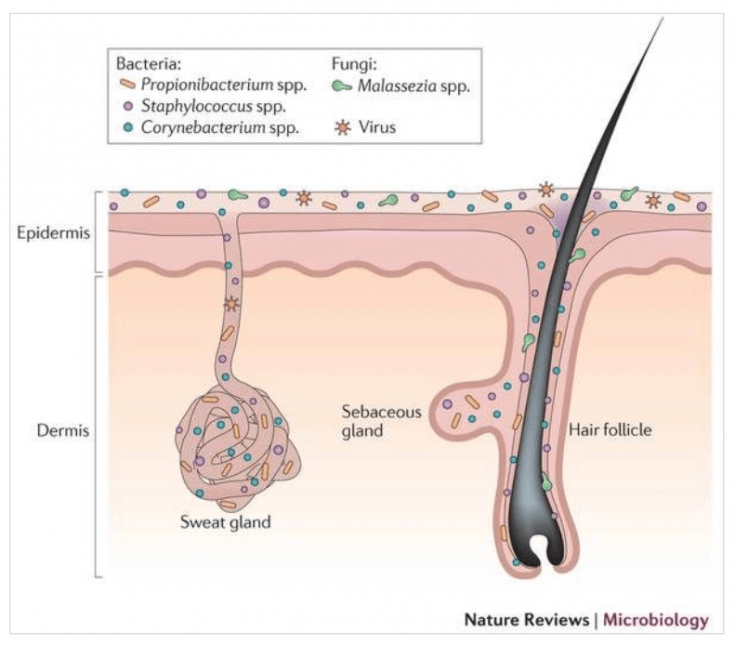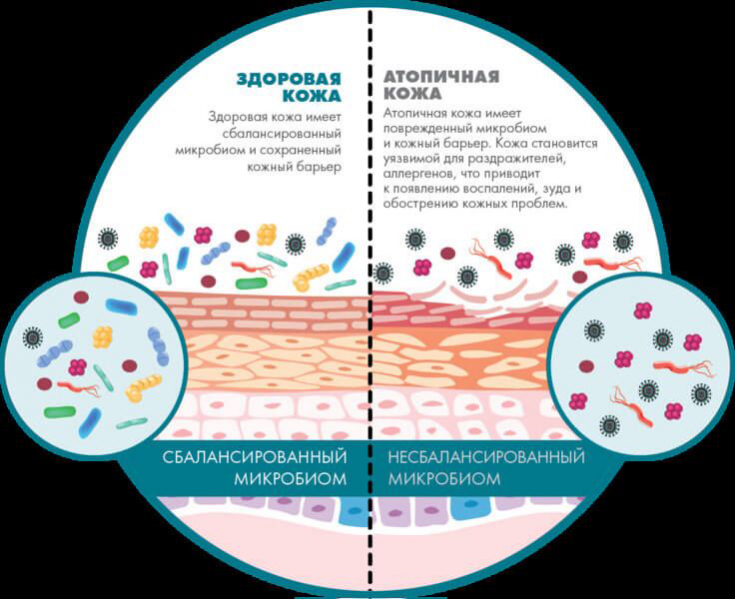In recent years, medical gastroenterology has turned to treatment strategies that target the gut microbiome and has undergone a marked change in its approach to antibiotics. Extrapolation of such methods to aesthetic care has shown favorable preliminary results. Agents that can influence the skin microbiome are probiotics and prebiotics. Probiotics are cultures of live microorganisms found in a healthy microbiome. Prebiotics are various agents, mainly represented by carbohydrates, which serve as a breeding ground for commensal and symbiotic microbes, accelerating their growth and promoting successful colonization. The article on estet-portal.com presents the results of studies on the use of topical pro- and prebiotics for the face.
- Topical probiotics and prebiotics, mechanism of action and efficacy in various dermal pathologies and conditions
- Probiotics and Prebiotics in the Treatment of Dermatitis and Acne
- Prebiotics for the skin: maintaining a healthy microbiome
- Topical probiotics and prebiotics for care
Topical probiotics and prebiotics, mechanism of action and efficacy in various dermal pathologies and conditions
Probiotics and prebiotics, like the resident microbiome, produce antimicrobial peptides that optimize the immune response in the dermis, eliminate pathogenic bacteria, and improve barrier properties by modulating the gene response and cell differentiation.
Read also: Probiotics are beneficial microbes, and prebiotics are food for them.
In dermatological practice, topical application of pro- and prebiotics is used to correct and prevent dermatological diseases and conditions such as atopic dermatitis, seborrheic
Atopic dermatitis is associated with increase in S.aures. This microorganism causes T cell dysfunction, increases the frequency of allergic reactions and the permeability of the skin barrier. Such probiotics as S.thermophiles, V. filiformis, S. hominis, S. epidermidies, L. johnsoni have demonstrated the ability to increase the concentration of ceramides, while reducing erythema and itching, as well as reducing the amount of S.aures.

Follow us on
Facebook! One of the links in the pathogenesis of acne is an increase in the pathogenic microbiome, the use of probiotics and prebiotics topically improves the condition of patients with acne without the side effects that are often observed when using antibiotic therapy.
Probiotics of choice for people with acne would be L. palantrum and cell-free supernatant from E. faecelis.
As a result of topical exposure of the skin to these probiotics, the virulence of P. acnes is reduced, which is a predisposing factor for successful treatment.Read also:
How to restore the body after antibiotics Studies report a beneficial effect of V. Filiformis topical probiotic and prebiotic applications in patients with seborrheic dermatitis and eczema.

Topical probiotics and prebiotics are also common for patients without a specific dermal problem. Probiotics such as S. thermophilus increase ceramide production, thereby improving skin hydration in patients prone to dryness. B. longum extract reduces sensitivity and increases resistance to
Prebiotics for the skin: maintaining a healthy microbiome Prebiotics are relatively easy to use, fairly stable, and easy to incorporate into a variety of formulations. There are several studies supporting the effectiveness of prebiotics for skin health. Glucan has been proven to stimulate the growth of a beneficial resident microbiome.
Prebiotics and probiotics in cosmetics
The topical use of prebiotics and probiotics excludes the simultaneous use of antibacterial solutions such as alcohol, salicylic acid, triclosan, benzoyl peroxide. Any solutions containing alcohol, salicylic acid and non-selective bacterial preparations are likely to negate the effect of pro- and prebiotic treatments.
Probiotics and prebiotics in cosmeceuticals can be presented in such forms as:
Growing medium - microbes are removed and enzyme is used. Probiotic microorganisms are inoculated into the liquid growth medium, multiplied and then filtered out
Bacteria lysates - contents of bacteria obtained by breaking them down
- Tyndalization - bacteria remain intact but incapable of division
- Live Probiotics is a real probiotic that can divide and form colonies.This form has millions of colony forming units (CFU/mL)
- Topical probiotics and prebiotics for skin care
- The main problem in achieving results when using topical probiotics and prebiotics is the introduction of bacteria into various forms of the product while maintaining stability. Follow us on
!
The technological process of manufacturing probiotic and prebiotic products requires special equipment and conditions, due to which high functionality is achieved. Objective evaluation The effectiveness of the use of topical probiotics and prebiotics is not full due to external factors, namely: hygiene products, constant contact with clothing and the environment in general. The probiotic and prebiotic care concept is backed by evidence and rationale, so the success of this approach is guaranteed in the near future. More useful information on our
YouTube
-channel







Add a comment